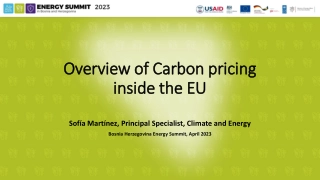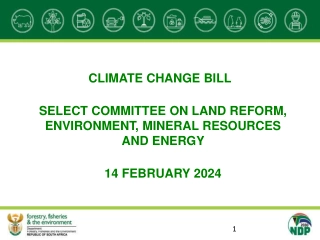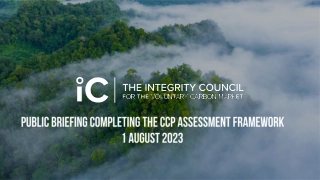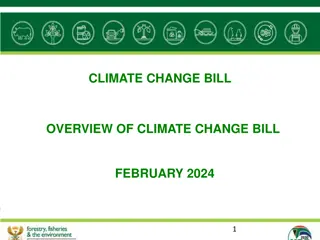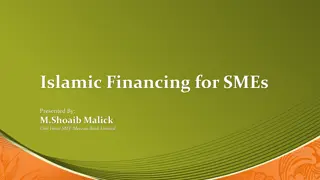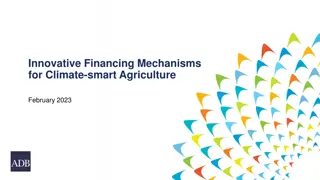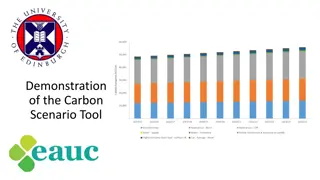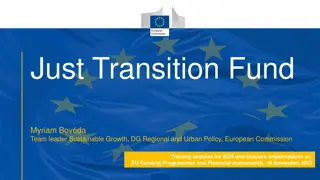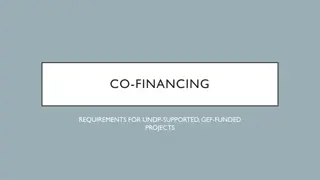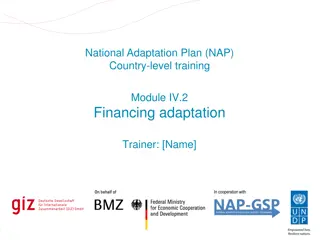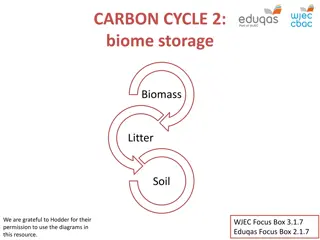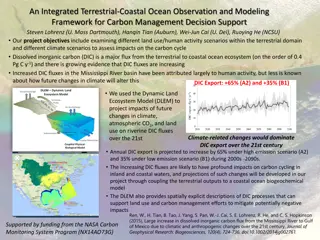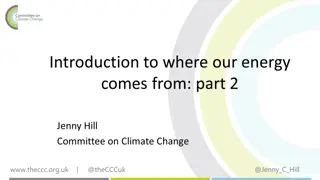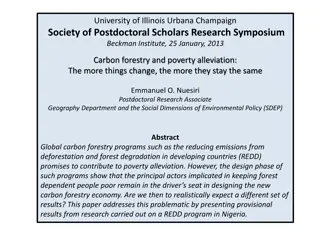
Financing the climate transition in Africa: making the carbon market a game changer
This article delves into the state of climate and carbon finance in Africa, highlighting the need for innovative financial instruments to address climate resilience and energy transition. It discusses the role of climate and carbon finance in closing the sustainable energy access gap by stimulating renewable energy deployment and fostering energy efficiency through carbon pricing. Moreover, it emphasizes the importance of linking climate and carbon finance to leverage all available finance sources for effective mitigation actions and investments.
Download Presentation

Please find below an Image/Link to download the presentation.
The content on the website is provided AS IS for your information and personal use only. It may not be sold, licensed, or shared on other websites without obtaining consent from the author. If you encounter any issues during the download, it is possible that the publisher has removed the file from their server.
You are allowed to download the files provided on this website for personal or commercial use, subject to the condition that they are used lawfully. All files are the property of their respective owners.
The content on the website is provided AS IS for your information and personal use only. It may not be sold, licensed, or shared on other websites without obtaining consent from the author.
E N D
Presentation Transcript
Financing the climate transition in Africa: making the carbon market a game changer Robert Lisinge OiC, Private Sector and Development Finance Division 20 February 2023
1 The state of climate and carbon finance in Africa 90% of climate financing needs unaddressed The continent needs USD 277 billion annually to implement its NDCs (CPI, 2022) Limited contribution from the private sector Private sector financing accounts for only 14% of Africa s tracked climate finance (CPI,2022) Innovative climate finance instruments for climate resilience and a just energy transition Transacted Voluntary Carbon credit Volume and average price consistently increase over time Renewable energy accounts for 24% of the VCM Renewable energy generates the second largest volume of carbon credits after Forestry and land use despite a significantly low price.
The role of climate and carbon finance in closing the sustainable energy access gap in Africa 2 Stimulate renewable energy deployment, support energy efficiency and foster energy access by providing incentives for reducing GHG emissions or by increasing the relative cost of energy from fossil fuels through carbon pricing Effective and efficient climate policy instrument that facilitates innovation, cooperation and least-cost compliance with climate targets. Despite these positive developments, the vast majority of energy sector investment in SSA comes from non-climate sources. Engage the private sector and accelerate innovation in different economic sectors towards decarbonization. Energy investment, particularly in the power sector, relies largely on public finance: state budgets, state-owned utilities, development finance institutions (DFIs) and export credit agencies (ECAs).
3 Linking climate and carbon finance and its potential benefits The magnitude of the required investment calls for leveraging all available finance sources Climate finance alone cannot address energy transition given the limited availability of public resources. Financial flows from carbon markets could boost the attainable finance flows for realizing investments in mitigation actions. A carbon price signal is necessary for driving cost-effective interventions A failure to blend, particularly when using public funds, implies the absence of a price signal that reveals the real cost of mitigation activities, which could result in over-subsidization and inefficient use of scarce public resources. Blending can incentivize the implementation of high-cost measures by tackling implementation barriers New technologies and mitigation actions in sectors, which often do not have a cost advantage in carbon markets, may be critical to achieving mitigation goals. In such cases, carbon markets are unlikely to be sufficient to encourage investment, and government interventions in the form of climate finance may be essential to overcome barriers to action in these sectors. Blending requires the harmonization of MRV frameworks for activities financed by carbon and climate finance. This could be accomplished by applying well-tested MRV tools utilized in carbon markets for monitoring mitigation projects supported by climate finance.


